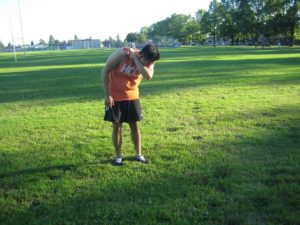Allergic rhinitis develops once the immune system is sensitized to something in the environment that is relatively harmless.
The condition has 2 forms – seasonal and perennial. For the seasonal allergic rhinitis, it can occur during spring, summer and early fall and triggered by sensitivity to mold and pollen. As for the perennial type, the symptoms are present all year and generally triggered by animal dander, mold, dust mites and cockroaches.
What are the indications?
Allergic rhinitis can trigger symptoms after the allergen is inhaled. During fall, the common allergy is ragweed. During spring, the common triggers include pollen and grasses.
Once an individual inhales an allergen, the immune system might react with the following symptoms:

- Stuffed nose due to congestion or blockage
- Itchiness that generally arises in the mouth, nose, eyes, skin or the throat
- Puffy, distended eyelids
- Episodes of sneezing
- Cough
Management of allergic rhinitis
The initial approach in managing both seasonal or perennial forms of hay fever is avoidance of the allergens.
Outdoor exposure
- Stay indoors during the peak pollen count.
- Use glasses or sunglasses while outdoors to reduce the amount of pollen that enters the eyes.
- Use a mask when mowing the lawn or raking the leaves or when gardening
- Do not hang clothing outdoors
Indoor exposure
- Make sure that windows are closed and use air-conditioning in the house and vehicle
- Utilize “mite-proof” covers for the comforters, pillows, duvets, box springs and mattresses. Bedding must be regularly washed using hot water.
- Reduce the amount of mold by keeping the humidity level low inside the house. The kitchen, bathrooms and basements must be cleaned regularly.
Management using medications
- Intranasal corticosteroids – these are highly effective drug classes used in managing allergic rhinitis. The drugs significantly reduce nasal congestion as well as itching, sneezing and runny nose.
- Antihistamines – these medications work by countering the effects of histamine.
- Decongestants – these medications relieve the pressure and stuffiness due to the swollen nasal tissues.
- Saline nasal sprays – these sprays help counteract symptoms such as dry nasal passage or thick nasal mucus.
- Nasal cromolyn – this works by blocking the release of allergy-triggering substances. The full dosage is 4 times daily and improvement of the symptoms can take several weeks. This can prevent the nasal reactions if taken before exposure to an allergen.
- Nasal ipratropium bromide spray – works by reducing the nasal drainage from allergic rhinitis
- Leukotriene pathway inhibitors – works by blocking the action of leukotriene which is a substance in the body that triggers the symptoms
In some cases, immunotherapy might be suggested for individuals who do not respond properly to treatment with medications, develop detrimental side effects, unavoidable exposure to an allergen or those who want a permanent solution to their allergies.
